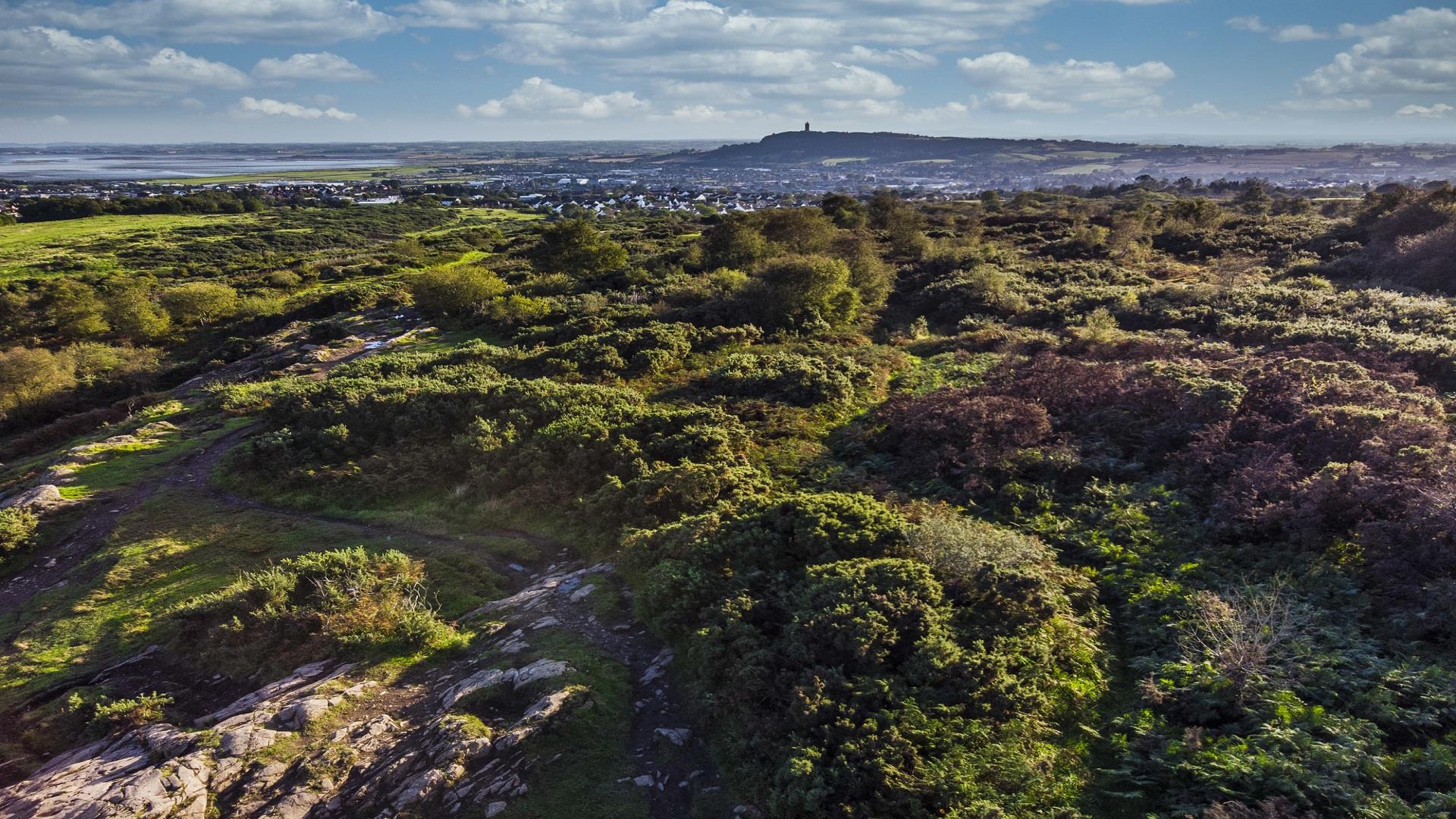Book Tickets Online
About
Part of the Great Wars Trail and Columban Way Heritage Trail
A heritage trail between Comber and Bangor covering 20 miles (32 km). A trail to experience the area’s rich and diverse history, Bronze Age relics, monastic settlements, Viking attacks, industrial heritage and military influences in both the First and Second World Wars, are just some points of interest you will discover along the way.
Whitespots has a fascinating industrial heritage and a walk here gives an insight into the lead mining which took place here from the late 18th century until the 1910s. In the mid 19th century, around 40% of the total lead produced in Ireland was from the Whitespots mines. Today, the remains of the mine shafts and buildings are protected industrial heritage remains.
The first commercial extraction of lead at the site started in 1776 when the Bangor and Newtown Mining Company was founded, but this venture closed within a decade. Mining resumed in 1827 under the Newtownards Mining Company, a mining cohort from the Isle of Man, who invested heavily in machinery and within 40 years succeeded in excavating over 6 miles of shafts and levels at the mine.
At the height of the mine’s activity during the 1850s, 400 men and boys were employed at Whitespots. Boys, some as young as 7 or 8 years old, worked from 7am to 6.15pm in the summer hammering ore from the mined rock, while other boys worked underground particularly at the pump-machine circulating fresh air around the mine. Work accidents were common and working condition harsh in this elevated site and the damp, cramped conditions in the mines led to chest ailments. The mining company employed a doctor on site, but payments to cover this were deducted from the miners’ wages. Other pay deductions included tools and other materials necessary for mine work, such as candles, rope and wood.
Mining became sporadic from the 1880’s and the mine finally closed in the 1910’s.
The most noticeable feature remaining from Whitespots’ time as an important mining centre is the striking 4 storey windmill stump. Originally a grist mill, by 1827 it was used to power machinery to crush the ore. It features in two episodes of Season 3 of the HBO series Game of Thrones.
As well as the industrial past of the area, the steady uphill walk is rewarded by panoramic views of the Mourne Mountains to the south of County Down, the expanse of Strangford Lough and the Ards Peninsula and, on a clear day, the Isle of Man and the Scottish coast are visible.
Accessed from a car park beside the Somme Museum, paths lead through the park to rocky outcrops with panoramic views and towards Helen’s Tower, a memorial built in 1848 by Frederick Lord Dufferin, 5th Baron of Dufferin and Ava in honour of his mother Helen Selina Blackwood. This is the building on which the design of the Thiepval Tower was based, reflecting the fact that many soldiers from the 36th (Ulster) Division who died at the Battle of the Somme received their initial training on the Clandeboye Estate within sight of Helen’s Tower.
Whitespots Country Park is also part of the Columban Way, a 20 mile heritage trail between Comber and Bangor, which celebrates the life of St Columbanus, a 6th century monk and one of Bangor Abbey’s most famous and influential students.
A new woodland garden opened at Whitespots as part of Ards and North Down Borough Council’s programme of events to celebrate the Northern Ireland Centenary. Previously underutilised land has been transformed into a beautiful woodland freely accessible for all to enjoy. Local schools and volunteers came together to plant over 5,000 native trees under the #STAND4Trees initiative.
The lead content of the old spoil heaps means that children should be discouraged from playing on them and picnic lunches are best taken in the area provided.
Find out more about the development of Whitespots Country Park.
Further reading:
British Mining No 7- Conlig & Whitespots Lead Mines, 1978 - look inside (catmhs.org.uk)













